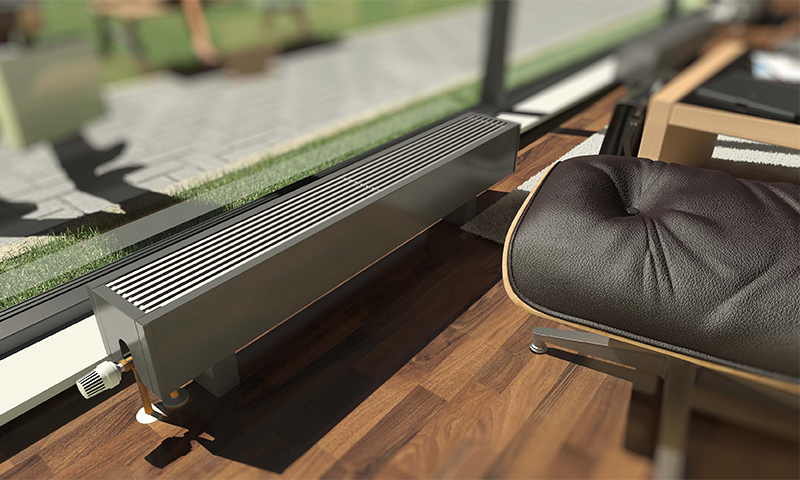RCD - fast-acting protective switch, which reacts to the differential (differential) current in conductors that supply electrical energy to the protected installation. The device will protect people from electric shock in the event of a malfunction of electrical appliances, as well as prevent a possible fire caused by leakage currents.

Content:
The best manufacturers of UZO - which company to choose
The safety of the tenants of the apartment and the safety of the property depends on the quality of the device; in a dangerous situation, the RCD should turn off the power for sure. Therefore, you need to purchase products from leading manufacturers, which has long established itself for its reliability.
UZO of the following trademarks belong to the most qualitative electric equipment:
1. ABB
2. Legrand
3. Schneider electric
As well as budget products brands:
1. Ecf
2. Iek
The design and principle of operation of the protective device
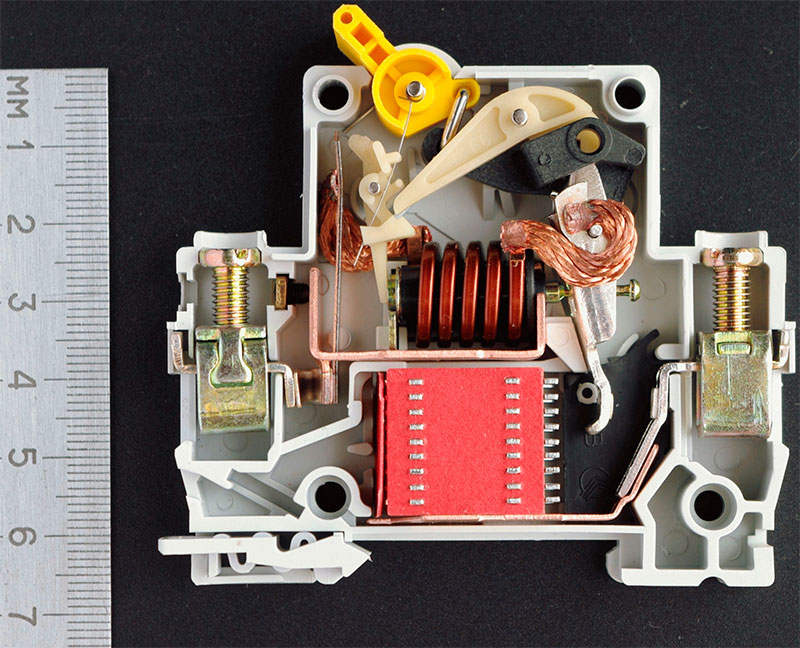
The main elements of an electromechanical type protective device for a single-phase network:
1. Differential current transformer - ferrite ring with two primary windings (it is formed by neutral and phase conductors) and secondary winding (conductor connected to the relay).
2. Starting body - direct-acting sensitive magnetoelectric relay.
3. The executive mechanism is made of a spring drive, power contacts and trigger mechanism.
4. Button "Test" with a resistor - is necessary to monitor the performance of the device. It simulates leakage current. If the RCD is in operation, the power supply to consumers who protect the device will be turned off.
According to the phase conductor, the current flows to the consumer, and via the neutral conductor it returns from the consumer. In the normal operating mode (in the absence of current leakage in the circuit), the value of the current on the primary windings is equivalent - “how much is gone, so much has come”.
Since the currents of the primary windings have a counter direction, the total magnetic flux will have a zero value - the magnetic fluxes induced by the currents of the primary windings in the transformer core compensate each other.
In case of deviation from the normal operation mode, for example, in case of insulation failure and leakage of current to the instrument case, the following occurs:
1. In the primary winding, in addition to the load current, a leakage current appears.
2. Current indicators in the primary windings of the neutral and phase conductor are different, and the magnetic fluxes induced on the core differ in magnitude.
3. The difference of the fluxes exceeding the zero value induces a magnetic field in the secondary coil, an electric current is generated.
4. From the electric current in the secondary winding, the relay is activated.
5. Next, the starting element is triggered - it acts on the actuating element, which disconnects the contact group and de-energizes the device with current leakage.
RCDs are modular, there are grooves and a latch on the back of the device for mounting the device on a DIN rail. The body is made of plastic, which does not support combustion.
RCD types
Parameters that can be divided into protective devices:
- Control method - dependent and independent of voltage;
- Purpose - with built-in overcurrent protection and without it;
- Installation method - stationary and independent;
- The number of poles is bipolar (for a single-phase network) and four-pole (for a three-phase network).
Electromechanical RCD

Electromechanical RCD - "veteran" protection against current leakage. The device was patented in 1928.In most European countries, it is the electromechanical safety device that is mandatory for use as protection against differential current.
The presence of voltage for the performance of an electromechanical RCD does not matter. The source of energy for the protection functions is the leakage current to which the switch reacts.
The basis of the device - the accuracy and reliability of mechanics. The magnetic core of the transformer has a high sensitivity, as well as temperature and time stability. It is produced from nanocrystalline or amorphous alloys, which are characterized by high magnetic permeability.
Benefits:
- Reliability - a good device guarantees 100% tripping due to leakage of current, regardless of the presence of voltage in the network;
- It retains its functionality even when the neutral conductor is broken;
- It has a simpler design that increases the reliability of the switch;
- Does not need auxiliary power sources.
Disadvantages:
- High price (depending on the brand, the price may be three times and even five times higher than the price of the electronic device).
Electronic RCD
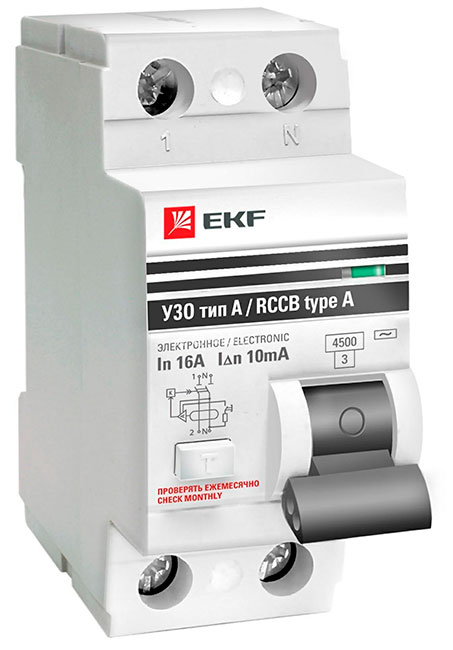
Inside the device there is an amplifier on a microcircuit or a transistor, thanks to which the switch operates even when a small current occurs in the secondary winding. The amplifier increases it to the size of the pulse required to activate the relay. But for the operability of elements of electronic RCD, the presence of voltage in the network.
There is a question about the need for RCD in the absence of voltage in the network. From what to defend? If the voltage disappeared due to the break of the neutral conductor in the circuit to the RCD, then the potential dangerous for a person continues to flow to the electrical installation via the phase conductor.
Advantages:
- Low price;
- Compactness.
Disadvantages:
- It functions only in the presence of voltage;
- Inoperable with a neutral break;
- More complex construction increases the likelihood of breaker failure.
UZO portable and in the form of the socket
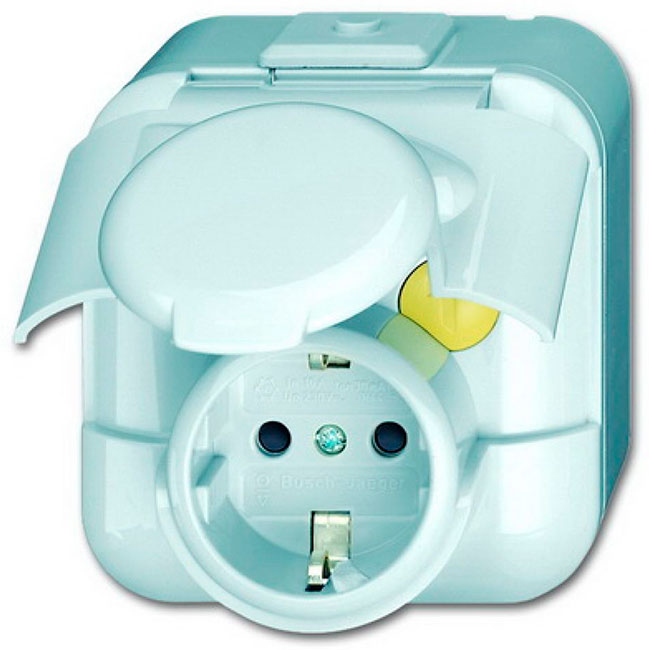
A simple solution that can protect against leakage current - portable and in the form of a socket. They are convenient to use in the bathroom and other rooms with high humidity, can be connected to any of the rooms of the apartment, where necessary.
Most of the proposed models are made in the form of a network adapter with a socket outlet for the plug. Even a child can use such a device - it is connected directly to a power outlet, and then the appliance is turned on.
Easy to use and extenders with the function of the RCD, designed for multiple consumers.
There are less universal models, they can be used after installation on the power cord instead of the plug or installed instead of the usual electrical outlet.
Benefits:
- The installation does not require intervention in the wiring;
- Installation does not require the assistance of an electrician;
- The activation of the automation allows determining in which consumer the insulation is damaged.
Disadvantages:
- Using the adapter in visible places introduces disharmony in the design of the room;
- In a room that is cluttered with furniture and appliances, and the space in front of the outlet is limited, there may not be enough space for the adapter;
- High cost - a quality adapter will cost more than a UZO and a socket purchased separately.
RCD with overcurrent protection (difavtomat)
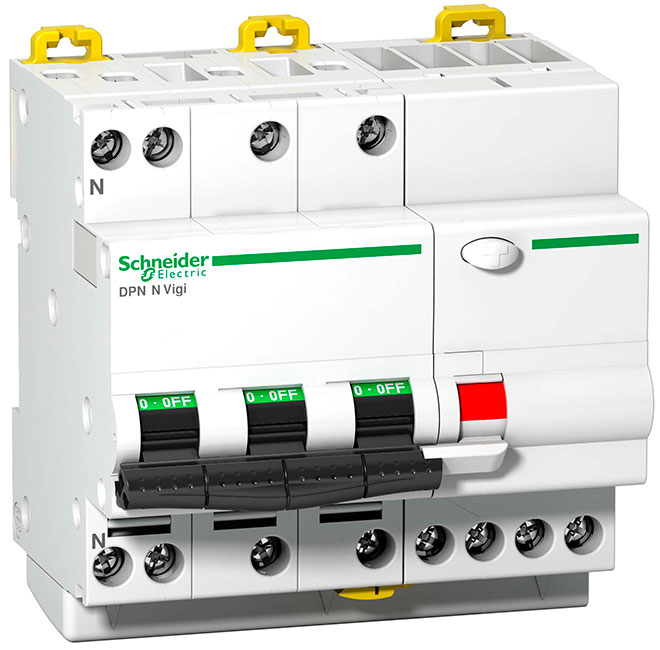
The device combines the functions of the RCD and the circuit breaker, which is designed to protect against overcurrents (prevents wiring from overload and damage during a short circuit).
Benefits:
- Efficiency - the purchase of one device will cost less than two;
- Takes less space in the panel;
- Save time during installation.
Disadvantages:
- When the breaker fails, the line will be unprotected against leakage currents and overcurrents;
- In the case of the operation of the device, it is not possible to determine what caused the overcurrent or leakage current;
- False positives caused by office equipment.It is not recommended to put dip-ons on the line to which computers and office equipment are connected.
RCD selection options
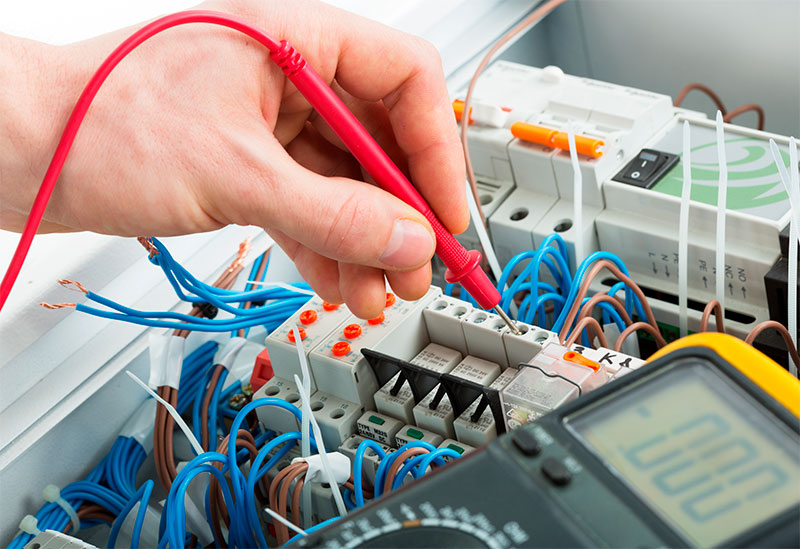
Trip Type
RCDs installed in apartments have two types of tripping: A and AC.
Devices such as speakers act on an alternating sinusoidal leakage current, which appears suddenly or gradually increases.
Type A devices are triggered by alternating sinusoidal and constant pulsating leakage currents that occur suddenly or gradually increase (recommended for installation on the line serving household electrical appliances with rectifiers and switching power supplies: computers, televisions and other equipment equipped with electronics).
Selectivity
Selective RCD (S - with longer shutter speed, G - with slower shutter speed) is installed on the input in front of other devices serving different groups in the apartment or cottage.
It fixes the leak, but it works only after a certain period of time (delay 0.2-0.5 seconds). Thanks to this group, where there was no leakage, do not de-energize.
Number of poles
Depending on the voltage in the network, the number of poles in the device used depends: for a 220 V network - two-pole, for a 380 V network - four-pole.
Rated current protection
The parameter determines how much current the device will be able to transmit during continuous operation. The indicator must be equal to or one step higher than that of the circuit breaker protecting the same part of the circuit.
Nominal tripping differential current
This indicator determines the leakage current at which the switch will trip. Universal RCD with a 30mA indicator is considered to be universal, it will provide protection against electric shock and fire, and can be used in lines with a sufficiently large load without false alarms.
Switches with an indicator of less than 30mA are not always able to provide fire safety, with significant loads often work erroneously.
Rated off time
Indicator that determines the time interval between the moment of occurrence of a leak and the moment of actuation of the switch. Standards define the maximum allowed response time to 0.3 seconds, high-quality devices work in 0.02-0.03 seconds.
Operating temperature
Most switches are designed to operate in a temperature range from - 5 ° C to + 40 ° C, if necessary, you can purchase a device that can react when it is cold to -25 ° C.
Which UZO choose
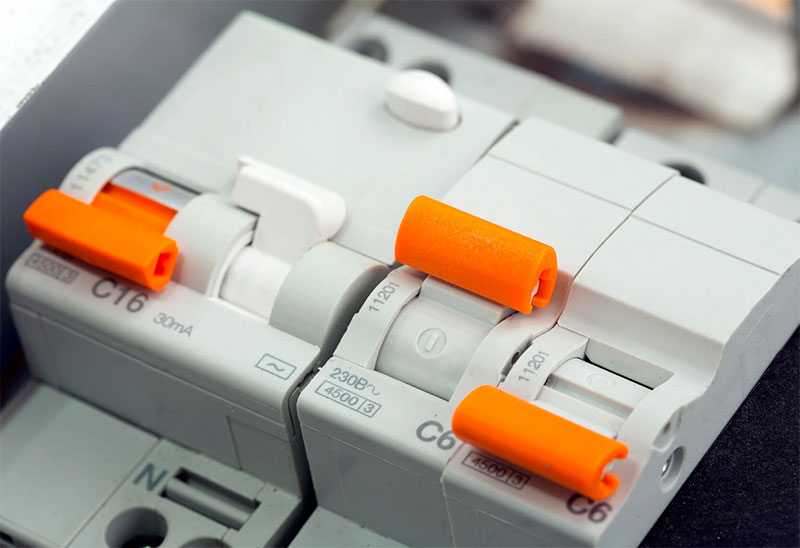
Recommendations for choosing:
1. If there is a 16 A circuit breaker in the circuit, the UZO is selected one step higher - 25 A, for a 25 A circuit breaker - 50 A, etc. In this case, even when overloaded in the network, the RCD will operate normally. Otherwise, overloads can affect the reliability of the device and shorten its service life.
2. For the line supplying electrical appliances (TV, computer, dishwashers and washing machines, microwave ovens), a device is required that triggers leakage of fixed and alternating pulsating currents - type A.
3. For the line that supplies the lighting devices, you can buy a device that operates for AC leakage - type AC.
4. Bathrooms, baths, saunas belong to the rooms that pose a special danger of electric shock due to high humidity. They require an RCD that reacts to a leakage current of 10 mA. If the bathroom enters the group line with a corridor, a kitchen, it is possible to install a 30 mA UZO.
5. In the room used in the winter (garage, sauna, unheated cottage) it is advisable to install a switch designed to operate at -25 ° C.
6. For a line containing several RCDs, it is preferable to install a selective RCD-S (G) at the input - it will protect in the case when the normal RCD serving the group fails, but if the RCD has worked, the apartment will not be de-energized.
7. In apartment flaps, as a rule, an input RCD, designed for a leakage current of 100 mA, is installed, for outgoing lines, a RCD, calculated for a leakage current of 30 mA, is used.
How much is the RCD
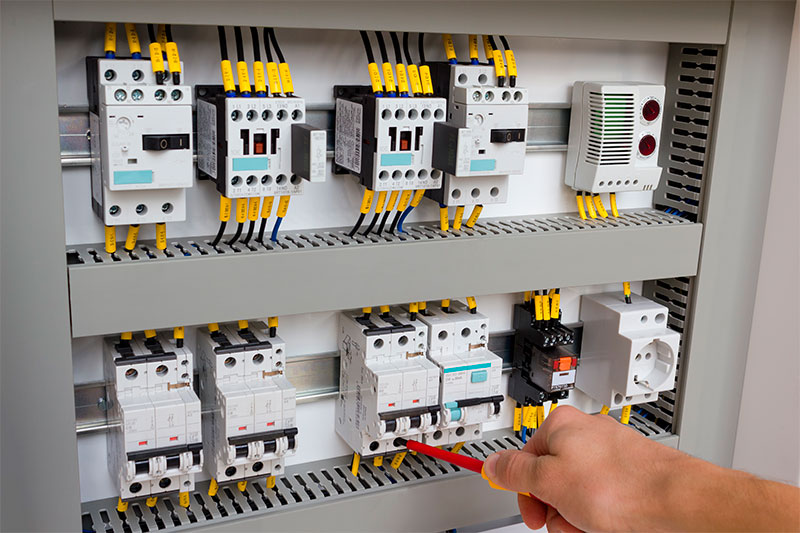
Regardless of the brand of the manufacturer, selective price, electromechanical UZO and type "A" devices belong to a higher price category.
The approximate prices for a double pole RCD, depending on the rated leakage current, are as follows:
1. 10 mA - from 1200 to 2600 rubles.
2. 30 mA - from 700 to 4700 rubles.
3. 100 mA - from 1300 to 4200 rubles.
Price for quadrupole RCD:
1. 10 mA - from 1500 to 2800 rubles.
2. 30 mA - from 1300 to 4400 rubles.
3. 100 mA - from 1800 to 4700 rubles.
For portable protective devices (10 mA, 30 mA) the price is in the range from 750 to 920 rubles.
It will be interesting to friends too





